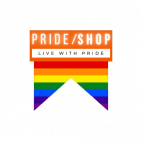Flirting in LGBTQ Contexts: Essential Tips with Compassion and Respect
In a world where gender and sexual diversity continue to gain visibility, it’s vital to acknowledge the unique aspects of flirting within the LGBTQ community. While flirting can be playful and exciting, doing so in LGBTQ spaces requires a thoughtful approach that prioritizes respect and empathy. This article provides key tips for flirting within the LGBTQ community, ensuring every interaction is positive, inclusive, and affirming for everyone involved.
The Art of LGBTQ Flirting: Understanding the Dynamics
What Makes LGBTQ Flirting Unique?
LGBTQ flirting calls for an understanding and acknowledgment of a wide range of identities and expressions. Unlike heteronormative flirting, which relies on more traditional roles and expectations, LGBTQ individuals often navigate interactions that don’t follow a fixed rulebook. This creates a space where curiosity, open-mindedness, and emotional intelligence are essential for meaningful connections.
Respecting Pronouns and Identities
One of the most fundamental signs of respect when flirting with someone in the LGBTQ community is using the correct pronouns. Doing so shows that you see and value them for who they truly are. If you’re unsure, ask politely—it’s a small step that makes a huge impact in showing your commitment to inclusivity and mutual respect.
Practical Tips for Kind and Respectful Flirting
Cultivate Clear and Honest Communication
Open communication is at the heart of any successful interaction. Within the LGBTQ context—where each person may have a unique background—it’s important to create space for honest dialogue. This includes clearly expressing your intentions, actively listening, and making room for the other person to share their boundaries and feelings without pressure or judgment.
Be Mindful of Your Environment
The setting in which you’re flirting matters. Understanding if you’re in a queer-safe space (like an LGBTQ-friendly bar or event) versus a less welcoming or public space greatly influences how gestures or comments will be received. Always aim to prioritize safety and comfort, adapting your approach to fit the environment.
Use Humor with Sensitivity
Humor can break the ice, but it must be used thoughtfully. Jokes based on stereotypes about LGBTQ people—even when intended as harmless—can be alienating or offensive. Choose inclusive and kind humor that builds a connection, rather than one that risks reinforcing damaging clichés.
Flirting Nuances Based on Identity
Flirting Among Gay Men
Flirting between gay men is often perceived as more direct, with physical appearance frequently playing a significant role. However, emotional depth and mutual interests should not be overlooked. Authentic connections come from engaging beyond superficial attraction, creating space for companionship and shared values.
Flirting in Lesbian Circles
For lesbian women, flirting is often more emotionally intimate, with strong emphasis on shared experiences. The popular “U-Haul” stereotype—which suggests rapid commitment—can lead to unnecessary pressure. It’s important to allow relationships to evolve at their own pace, letting emotional connection develop naturally without conforming to societal clichés.
Flirting with Bisexual Individuals
When flirting with bisexual people, it’s crucial to fully acknowledge and respect their identity. Avoid comments or assumptions that question the legitimacy of bisexuality, such as asking someone to “pick a side.” Embracing their whole self with understanding and affirmation fosters trust and healthy interaction.
Flirting with Non-Binary and Agender Individuals
Flirting with non-binary or agender folks invites a broader, more fluid approach. Be open to letting go of gender norms and instead focus on personalized communication. Using the appropriate pronouns and language shows your willingness to affirm their identity and engage in a respectful and sincere way.
Creating a Safe Space for Flirtation
Prioritize Consent
Consent is vital in all interactions—and particularly important within marginalized communities such as LGBTQ individuals. Always seek clear, affirmative consent before initiating physical contact or taking the flirtation to a more intimate level. Pay close attention to both verbal and non-verbal cues to ensure mutual comfort.
Honor Personal Boundaries
Everyone has different limits, and respecting them is key to healthy, respectful flirting. Be attentive to how the other person responds and engage in open dialogue to understand their comfort levels. Discussing boundaries openly helps set the stage for meaningful and consensual connections.
Foster Community Support
Being part of the LGBTQ community means contributing to a culture of love, respect, and mutual care. This includes standing against judgment, promoting healthy expressions of love and desire, and offering support—whether emotional or practical—to fellow community members when needed. Collective respect strengthens individual confidence.
The Importance of Ongoing Learning
Challenge Stereotypes and Biases
It’s easy to unconsciously internalize stereotypes, especially when it comes to LGBTQ dating and relationships. Take time to examine these perceptions and actively work to dismantle them. Breaking away from narrow definitions allows more authentic relationships to flourish, rooted in individuality rather than assumption.
Stay Informed on LGBTQ Issues
The LGBTQ landscape is ever-evolving. Staying informed about current events, legal changes, social movements, and cultural trends shows that you care about the well-being of your community—and helps create a stronger, more informed connection with your potential partners.
Final Thoughts
Flirting in the LGBTQ community is a nuanced, colorful journey that celebrates authenticity, mutual respect, and emotional awareness. By approaching each interaction with kindness, communication, and a willingness to learn, we create opportunities for rich and joyful connections. What’s your most memorable moment flirting in an LGBTQ context? How can these insights guide your approach moving forward?

